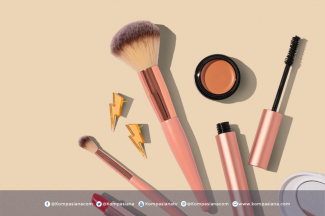Hello! In the blog section of this outline, we will start with an introduction that provides a brief overview of acne as a common skin condition. We will discuss the importance of understanding the causes, types, and treatment options available for acne. This information will help readers gain a better understanding of this prevalent skin issue and how to effectively manage it. Stay tuned for more insightful content on acne in the upcoming blog section!
Causes of Acne
Acne is a common skin condition that affects many individuals, and understanding the factors that contribute to its development is crucial in managing and treating it effectively. There are various triggers that can lead to the formation of acne, with some of the most common ones being hormonal changes, genetics, and lifestyle choices.
Hormonal changes play a significant role in the development of acne, particularly during puberty when an increase in androgen hormones can lead to an overproduction of sebum, the skin's natural oil. This excess oil can clog pores and create an environment for acne-causing bacteria to thrive, resulting in breakouts.
Genetics also play a key role in determining an individual's susceptibility to acne. If one or both parents have a history of acne, there is a higher likelihood of developing the condition due to inherited factors that influence sebum production, skin cell turnover, and inflammation.
Additionally, lifestyle choices such as diet, stress levels, and skincare routines can impact the development of acne. Consuming a diet high in processed foods and sugars can trigger inflammation in the body, leading to acne flare-ups. High stress levels can also contribute to hormonal imbalances that exacerbate acne symptoms.
By understanding the various causes of acne, individuals can take proactive steps to manage their condition effectively. Consulting with a dermatologist, adopting a skincare routine tailored to their skin type, and making healthy lifestyle choices can help in preventing and treating acne breakouts.
Types of Acne
Acne is a complex skin condition that can manifest in various forms, each with its own characteristics and treatment approaches. Understanding the different types of acne is essential in determining the most effective course of action for managing and treating breakouts. Below, we will explore the most common types of acne and provide visual examples or diagrams to help readers identify each type.
- Blackheads: Blackheads, also known as open comedones, are small, dark bumps that appear on the skin's surface. They occur when hair follicles become clogged with excess oil and dead skin cells, resulting in a visible black or darkened plug.
- Whiteheads: Whiteheads, or closed comedones, are similar to blackheads but have a white or flesh-colored appearance. They form when a hair follicle becomes clogged with oil and skin cells, causing a closed bump to develop on the skin.
- Papules: Papules are small, red bumps that are typically tender to the touch. They occur when the walls of hair follicles break down, leading to inflammation and the formation of a raised lesion on the skin.
- Pustules: Pustules are similar to papules but contain pus at their center, giving them a white or yellow appearance. They are often referred to as "pimples" and can be painful or tender when touched.
- Nodules : Nodules are large, solid, and painful bumps that develop deep within the skin. They result from the buildup of bacteria, oil, and dead skin cells in the hair follicles, leading to severe inflammation and swelling.
- Cysts: Cysts are the most severe form of acne and appear as large, pus-filled lesions beneath the skin's surface. They are often painful, tender, and can cause scarring if not treated promptly.
By familiarizing themselves with the different types of acne and their characteristics, individuals can better identify their specific acne concerns and work with dermatologists to develop personalized treatment plans. Visual examples or diagrams can aid in recognizing and distinguishing between the various types of acne, facilitating informed decision-making regarding skincare routines and treatment options.
Treatment Options for Acne
